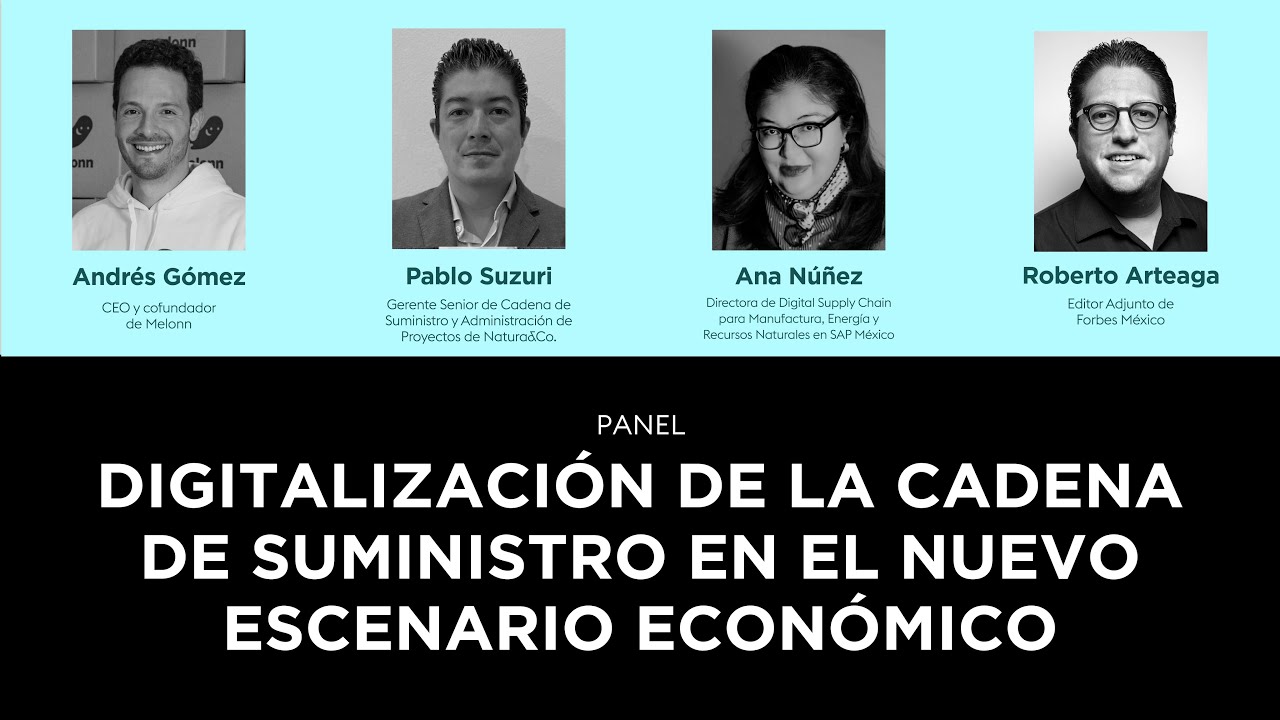Supply Chain Management as a Partner with Finance
Summary
TLDR本次网络研讨会由MITCTL的课程负责人Kellen Betts和Laura Allegue主持,特邀嘉宾Denis Leite,Bertelsmann Printing Group的首席财务官,分享其在供应链决策对财务影响方面的丰富经验。Denis强调了项目与公司战略一致性的重要性,并提供了如何获得内部支持、有效沟通和降低风险的实用建议。他还讨论了ERP项目集成、数据管理以及销售与运营规划(S&OP)在确保供应链与财务目标一致性中的作用。Denis鼓励参与者不要害怕与高层管理人员交流,并强调了简单性、透明度和承诺的重要性。
Takeaways
- 📈 **项目与公司战略一致性**:项目需要与公司战略保持一致,否则即使经济上可行,也可能无法获得批准。
- 💡 **财务的重要性**:财务不仅仅是数字,更重要的是项目与公司战略的一致性以及如何与执行团队沟通。
- 🗓 **项目时间线的重要性**:项目时间线对公司其他决策有重大影响,因此承诺的时间线必须严格遵守。
- 🔍 **风险管理**:项目中风险管理至关重要,需要准备应对计划,并且在董事会前展示你对潜在风险的理解和应对策略。
- 📊 **KPIs的交叉验证**:不应仅依赖单一的KPI,而应进行交叉验证,以确保项目目标与公司的整体战略相符。
- 🤝 **沟通的重要性**:与财务和其他利益相关者的有效沟通对于项目的成功至关重要。
- 🚀 **快速胜利**:在项目执行中寻找并实现快速胜利,以保持团队的动力并展示项目进展。
- 🌐 **全球业务理解**:在全球供应链管理中,需要理解不同国家和地区的政治、经济和金融情况,并尝试减轻相关风险。
- 📚 **持续学习与改进**:项目完成后,应分享经验教训,以便未来项目能够学习和改进。
- 🛠 **ERP实施经验**:在ERP系统的实施中,重要的是要明确公司的需求和期望,以及如何从数据中获取正确的信息。
- 💼 **职业发展建议**:对于职业发展,热情是基础,同时需要持续学习、享受工作,并与公司战略保持一致。
Q & A
丹尼斯·莱特先生在加入贝塔斯曼印刷集团之前有哪些职业经历?
-丹尼斯·莱特先生是一位拥有超过30年经验的财务专业人士。他曾在巴西的阿尔斯通公司开始他的职业生涯,这是一家大型的法国公司。之后,他在不同的行业如矿业、自动化等领域工作过,并且在过去的五年中,他搬到美国,担任GE公司的LM Wind Power的美洲首席财务官。
为什么在供应链管理中财务的角色很重要?
-在供应链管理中,财务的角色至关重要,因为项目需要与公司的战略保持一致。如果项目在经济上讲得通,但不与公司战略相符,那么它可能不会被批准。财务不仅仅是数字游戏,更是确保项目与公司整体目标和战略相匹配的关键。
丹尼斯如何强调项目与公司战略对齐的重要性?
-丹尼斯通过举例说明,如果一个项目在经济上看起来很有吸引力,但与公司的核心战略不符,如成为零二氧化碳排放的领导者,那么这个项目最终可能不会被批准。因此,理解公司的战略是在开始任何项目之前的关键。
在项目中,为什么丹尼斯强调风险管理的重要性?
-丹尼斯强调风险管理的重要性,因为在项目实施过程中,总会有不可预见的事情发生。管理层需要准备好应对这些风险,制定缓解计划和备选方案,以展示他们对项目的所有权,并能够向董事会展示他们已经考虑到可能发生的问题,并有计划来缓解这些问题。
丹尼斯提到了项目的五个阶段,这些阶段是什么?
-丹尼斯提到的项目五个阶段包括:1) 概览阶段,定义目标、创建商业案例和规划;2) 规划阶段,确保项目范围明确、时间线可行;3) 执行阶段,分配正确的资源、监控项目进度;4) 完成阶段,修订结果、确保交付所要求的内容;5) 经验教训分享,确保从项目中学习并改进未来的项目。
为什么丹尼斯建议在项目规划中要谨慎对待时间承诺?
-丹尼斯建议在项目规划中谨慎对待时间承诺,因为很多其他决策和计划都是基于项目的时间表来制定的。如果项目未能按时交付,这将影响到公司其他部门的运营,可能导致损失或需要额外成本来弥补延误。
丹尼斯如何看待KPI在项目管理中的作用?
-丹尼斯认为KPI在项目管理中非常重要,但他强调不应该只依赖一个KPI。他建议进行交叉参考,以确保所选的KPI能够真正反映项目的成功与否,并且与公司的整体战略保持一致。
在ERP项目中,丹尼斯认为最关键的因素是什么?
-在ERP项目中,丹尼斯认为最关键的因素是明确你期望从数据中得到什么。他强调了数据的重要性,即“垃圾进,垃圾出”,如果输入的数据不正确,那么分析和决策也将是错误的。
丹尼斯如何描述销售和运营规划(S&OP)的重要性?
-丹尼斯通过一个实际案例描述了S&OP的重要性,他提到如果销售和供应链之间的规划不一致,可能会导致库存不足或库存过剩的问题。因此,确保销售和供应链之间的信息一致性对于避免这些问题至关重要。
当与首席财务官会面时,丹尼斯建议如何准备?
-丹尼斯建议不要害羞,要展现出能量和对话题的掌握。他强调了简单性、透明度和承诺的重要性,建议不要承诺无法实现的事情,并且要简单明了地表达观点。
丹尼斯在演讲中提到了哪些关键的项目管理原则?
-丹尼斯在演讲中提到了多个关键的项目管理原则,包括项目需要与公司战略对齐、风险管理的重要性、制定缓解计划、项目五个阶段的注意事项、时间承诺的重要性、KPI的交叉参考以及ERP项目中数据的重要性。
Outlines

This section is available to paid users only. Please upgrade to access this part.
Upgrade NowMindmap

This section is available to paid users only. Please upgrade to access this part.
Upgrade NowKeywords

This section is available to paid users only. Please upgrade to access this part.
Upgrade NowHighlights

This section is available to paid users only. Please upgrade to access this part.
Upgrade NowTranscripts

This section is available to paid users only. Please upgrade to access this part.
Upgrade NowBrowse More Related Video

Lean, Green, and Digital: Leveraging SCM Tools to Balance Complex Tradeoffs

How Secure IoT is Transforming Supply Chains

The Paradox of Digital - people, processes, and technology in SCM

Supply Chain Risk Management and X shoring

Generando Resiliencia en la Cadena de Suministro de la Industria Automotriz | CLIS

Panel 3 | Digitalización de la cadena de suministro en el nuevo escenario económico
5.0 / 5 (0 votes)
